Marzee Graduate Show 2014
August 17-October 19, 2014
Galerie Marzee, Nijmegen, Netherlands
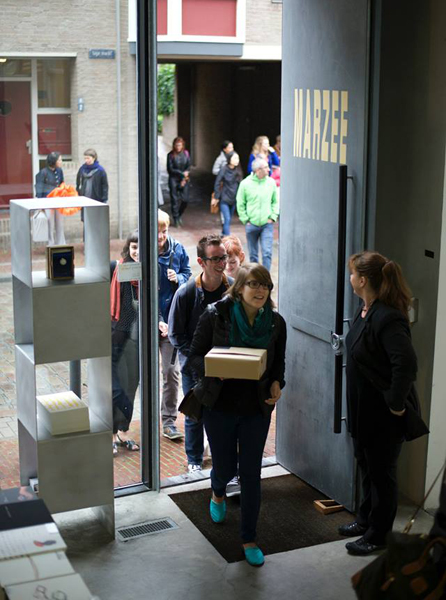
Every year, alongside the show, space is also given over to a small exhibition of work produced by the previous year’s prizewinners. The prize, a weeklong residency at Atelier Ravary in Belgium, gives the winners the chance to experiment and develop their practice in the estate’s tranquil surroundings and then show this work during the next year’s graduate exhibition. The prize is awarded to the most promising students, and this year’s prizewinners,* from Australia, Germany, Japan, Sweden, and the US, testify to the international spirit of the Marzee Graduate Show. Then there is the symposium, which takes place in the gallery the day after the opening, during which participating graduates have the opportunity to engage with their contemporaries and present and talk about their work, their inspirations, their aspirations, and the challenges that face them as they embark on a life outside of the supportive environment of a school.
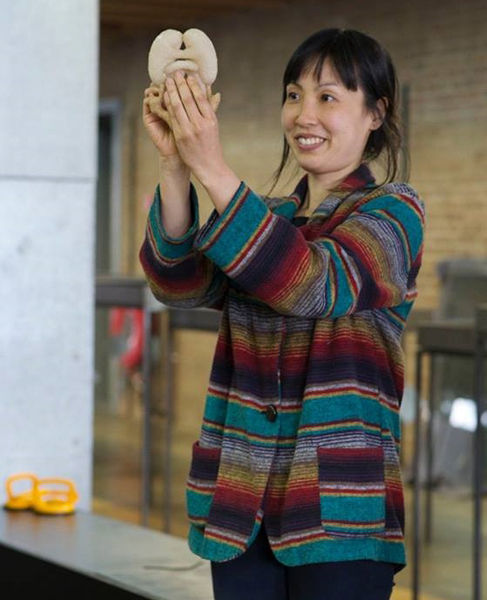
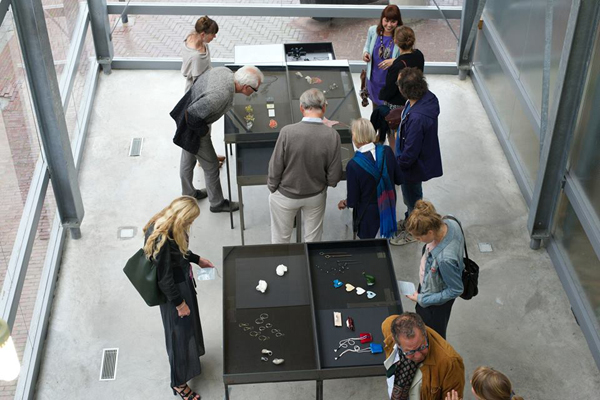
Just as last year, the desire to negotiate the connections between mankind and the world around us is much in evidence. Where this previously manifested itself as reverence for nature, we now see an appreciation of the often unacknowledged beauty and magnificence of the built environment, a refocusing of the eye on the aesthetics of the urban landscape. For Ashly Kark of Australia National University in Canberra, this finds form in a steely gray collection that pays homage to the architectural composition of a local shopping center. By directly translating its exposed structural steel form into jewelry and repositioning it on the body, she hopes to encourage a more attentive rereading of its artistic possibilities, realigning it from functional to decorative. Sophie Baumgärtner, a graduate from Burg Giebichenstein Kunsthochschule Halle, uses traditional iron-forging techniques to create finely wrought, beetle-like forms. Her Scaphidema Metallicum fibulae speak of nature and the environment, human and architectural constructions, in a reserved and formal language.
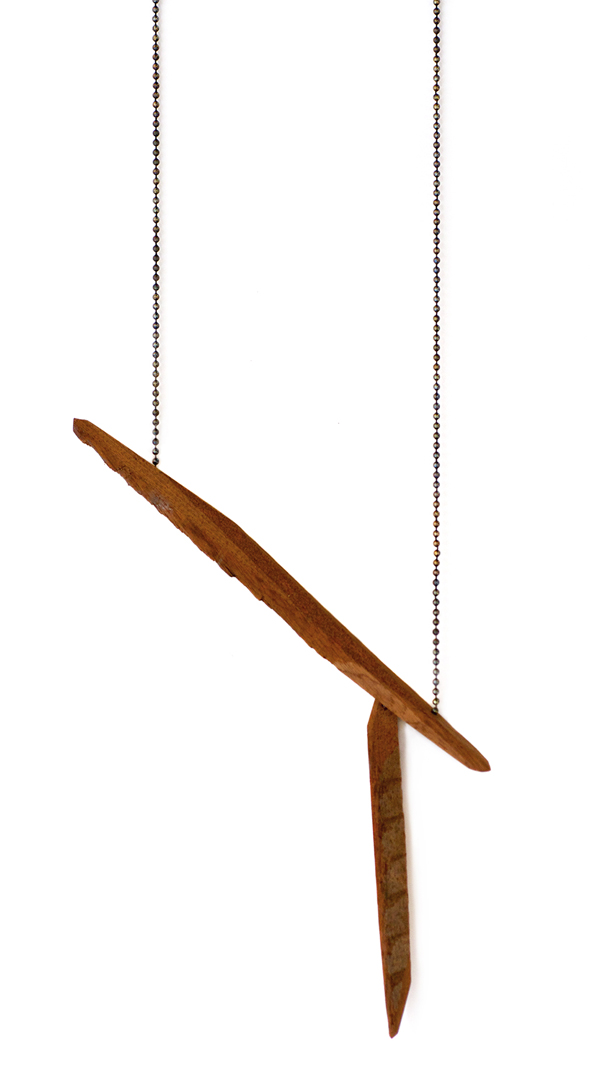
The transformational possibilities of the detritus of city life hold intrigue for several of this year’s graduates. Eva Burton of Escola Massana gathers abandoned toys and furniture—familiar objects shipwrecked on the streets of Barcelona—and makes playful, instinctive assemblages. Her Nap of Primary Colours is reminiscent of Oskar Schlemmer’s transfiguring costumes for his Triadic Ballet. Meanwhile, San Diego State University’s Jessica Anderson explores what she sees as the evocative beauty in discarded remnants, the everyday trash that dominates the urban environment. Held in a simple brass frame, the top of a tin can becomes a brooch with a simple, straightforward beauty. She does not seek to change or disguise its origins; she simply draws attention to its aesthetic potential. Turn it over and the pin mechanism is a thing of pure minimalist beauty.
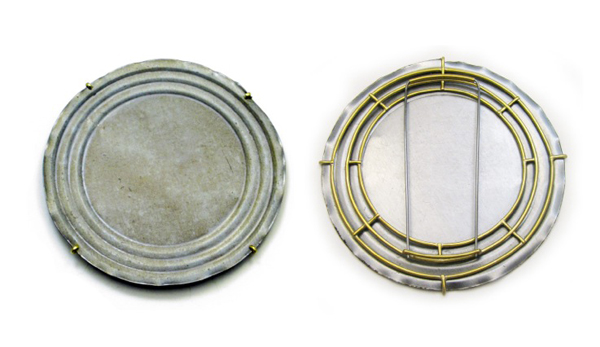
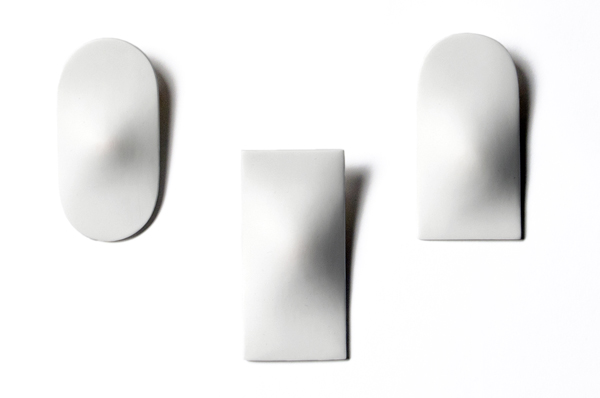
Other work pays tribute to the poetry of the passage of time and the very human need to memorialize moments from the past. For some, memory is in their materials—the recycled leather clothing of Agne Visniauskaite’s (Edinburgh College of Art) brooches and necklaces, for example—while for others it is the creation of the memory that drives the creative process. Exploring the deterioration and remains of memory, Kate Wischusen, of RMIT in Melbourne, marks the surface of her brooches with enamel and then partially wears it away, leaving behind a lingering trace of the moment before erasure. It brings to mind fragments of pathways and walls, their surfaces worn down by the pounding of feet or the pawing of countless hands. Lynne Philippé of FH Düsseldorf seeks to conjure and re-create the mood of a passing moment, using found objects as the starting point in her attempt to annotate and elicit the vague and intangible nature of an atmosphere. Her necklaces are restrained—the sea-worn top of a bottle neck, simply strung, becomes a conduit through which to recollect the brutal cold of the wind and the might of the ocean on the Danish coast. In another graduate’s work, anonymous faces stare back at us from old photographs, names lost in the past; Nicole Beck (Akademie der Bildenden Künste München) acknowledges them. These shadowy, ethereal relatives, reminiscent of 18th-century shadow portraits, are rendered simply in copper, enameled or worked to evoke a patina of age, as if the pieces themselves had just been unearthed from a dusty attic.
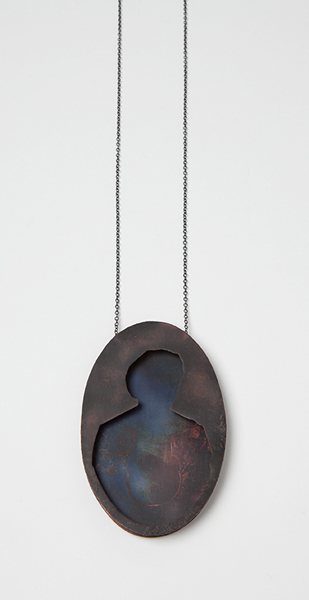
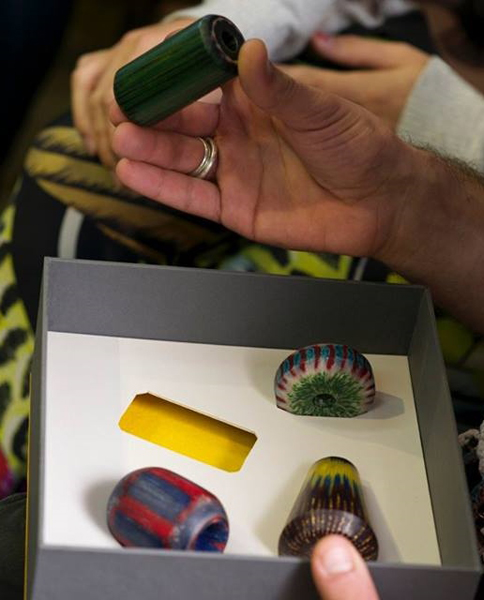
This detachment from the wearer and the experiential imperative of jewelry is also evident in the number of objects that were submitted to this year’s show, which is smaller than 2013’s. “Marzee is a jewellery gallery and that is what I want to show and it is a shame that this tendency to make objects increases every year,” says van den Hout. Graduates who submitted only objects did not make it through the selection process, but during the symposium, participants were asked who had made objects as part of their graduate show, and almost everyone raised their hands. Some of the graduates’ comments betrayed their doubts about the legitimacy of jewelry within the visual arts—an object, as an abstracted form, carries more artistic and intellectual currency than an object of adornment. Schools encourage their students to push at the boundaries of jewelry, to challenge the conventions of material, form, and purpose. This ongoing re-evaluation and recalibration of the accepted norms is vital, but it seems that, as an unintended consequence, it leaves some students skeptical about the possibilities of jewelry as a sufficient medium through which to express their ideas. For some of this year’s participants, the question of wearability is a moot point. For them, making an object wearable in the conventional sense adds nothing to their ideas, and even overcomplicates their intentions. Arguably it is easier to express a thought or feeling in an object that does not have to negotiate the complex terrain of the human body.
For me, this is an issue: Fundamentally, jewelry is an art form that should operate in the public and private space of a person, and if you take that relationship away, then what are you left with? The privileging of concept, thinking more about what you want to say rather than how you want to say it, can produce objects that bear no functional relevance in the context of the body. A rigorous and open-minded exploration of ideas and forms of self-expression is, of course, essential, and these investigations will not always result in jewelry. But I hope this trend will not be to the detriment of what makes jewelry such a unique art form—its intimate connectedness to our bodies.
INDEX IMAGE: Marzee Graduate Show Symposium 2014, Esther Suarez Ruiz, Untitled, 2014, pendant, epoxy resin, cotton yarn, 60 x 50 x 40 mm, courtesy of Galerie Marzee, photo: Michiel Heffels
*This year’s prizewinners are:
Vera Aldejohann – FH Düsseldorf, Germany
Sophie Baumgärtner – Burg Giebichenstein Kunsthochschule Halle, Germany
EunJi Choi – Cranbrook Academy of Art, Bloomfield Hills, USA
Katie Collins – RMIT (Royal Melbourne Institute of Technology), Australia
Li Liang – HDK (Högskolan för Design och Kunsthantverk), Gothenburg, Sweden
Ayano Takahashi – Hiko Mizuno College of Jewelry, Tokyo, Japan




